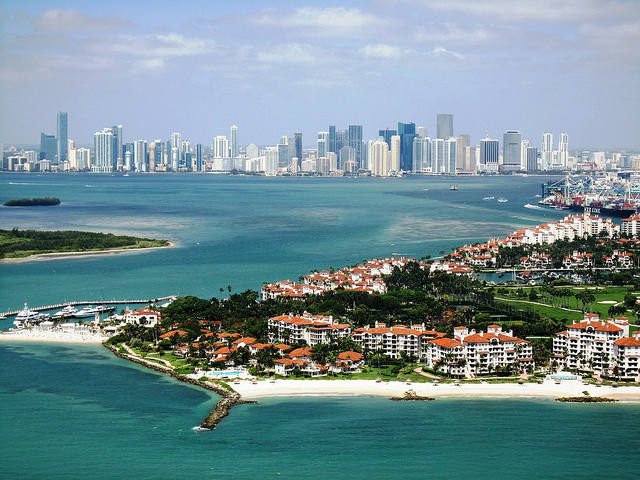For this lesson, we'll explore two of the most vulnerable environments to climate change impacts - the coasts and cities with particular emphasis on their vulnerabilty to extreme weather events.

Scientists have little doubt that the impacts and costs of climate change will be unavoidable –– and most likely the greatest –– in coastal environs. More people and more infrastructure will suffer harm in coastal zones than in any other place on Earth. Most other aspects of climate change are only now starting to be felt, but impacts in coastal zones are readily apparent today and accelerating. In response to this unfolding disaster, many of the world’s great coastal cities are already developing adaptation strategies and hoping to avoid the human and financial tragedy that awaits them.

About half the world’s population currently lives in cities. An increasingly larger proportion of the population will live in cities at the same time that climate change intensifies. About 85 percent of the Western Hemisphere’s population will be living in cities by 2030, up from somewhere near 50 percent in the middle of the 20th century. Even more shocking urban growth has taken place in Asia and Africa, going from 17 and 15 percent urban in 1950 to a projected 54 and 51 percent in 2030, respectively. Estimates are that more than 37 percent of the world’s population will live in cities with populations larger than 1 million people in 2030. Against this backdrop of unprecedented urban growth, this lesson will explore relationships between cities and climate change.
Climate-City Relationships
Many people mistakenly think that cities have no connection with climate because urban dwellers’ homes and vehicles insulate them from direct contact with it. Climate, however, is intimately linked to cities and their inhabitants. Many urban activities are climate sensitive, including such diverse activities as basic water use, transportation, construction, and sport and recreation. Climate also affects the costs of climate control, causing urbanites in tropical and subtropical climates to expend huge amounts of energy and money on air conditioning, whereas city dwellers in extratropical climates spend vast sums on heating in winter. Climate and weather also interact with socioeconomic and other natural stresses to increase or decrease overall stress on urban inhabitants.
Climate-city relationships therefore significantly influence the way that cities function, so if these interactions change because climate changes, cities must adapt to accommodate the new climate. Consequently, understanding the likely impacts of climate change on cities, the vulnerability of cities to those impacts, and the potential of cities for adaptation to climate change is a vital area of study because of the enormous number of people who live in cities.
| Year | Percentage Urban | Percent of the world's urban population living in the region | Percent of urban population in different size-class of urban centre, 2000 | ||||||||||
|---|---|---|---|---|---|---|---|---|---|---|---|---|---|
| 1950 | 1975 | 2000 | 2030* | 1950 | 1975 | 2000 | 2030* | Under 0.5 m | 0.5 - 1 m | 1 - 5 m | 5 - 10 m | 10 m+ | |
| Northern America | 63.9 | 73.9 | 79.1 | 86.7 | 15.0 | 11.9 | 8.8 | 7.1 | 37.4 | 11.0 | 34.3 | 5.4 | 11.9 |
| Latin America and the Caribbean | 42.0 | 61.2 | 75.4 | 84.3 | 9.6 | 13.0 | 13.9 | 12.4 | 49.8 | 9.0 | 21.7 | 4.9 | 14.7 |
| Oceania | 62.0 | 71.5 | 70.5 | 73.8 | 1.1 | 1.0 | 0.8 | 0.6 | 41.9 | 0.0 | 58.1 | 0.0 | 0.0 |
| Asia | 16.8 | 24.0 | 37.1 | 54.1 | 32.0 | 37.9; | 47.9 | 53.7 | 49.0 | 10.0 | 22.6 | 8.8 | 9.7 |
| Africa | 14.7 | 25.4 | 36.2 | 50.7 | 4.5 | 7.0 | 10.3 | 15.1 | 60.2 | 9.6 | 22.1 | 4.6 | 3.5 |
| WORLD | 29.0 | 37.2 | 46.8 | 59.9 | 100.0 | 100.0 | 100.0 | 100.0 | 52.6 | 9.8 | 22.4 | 6.8 | 8.4 |
